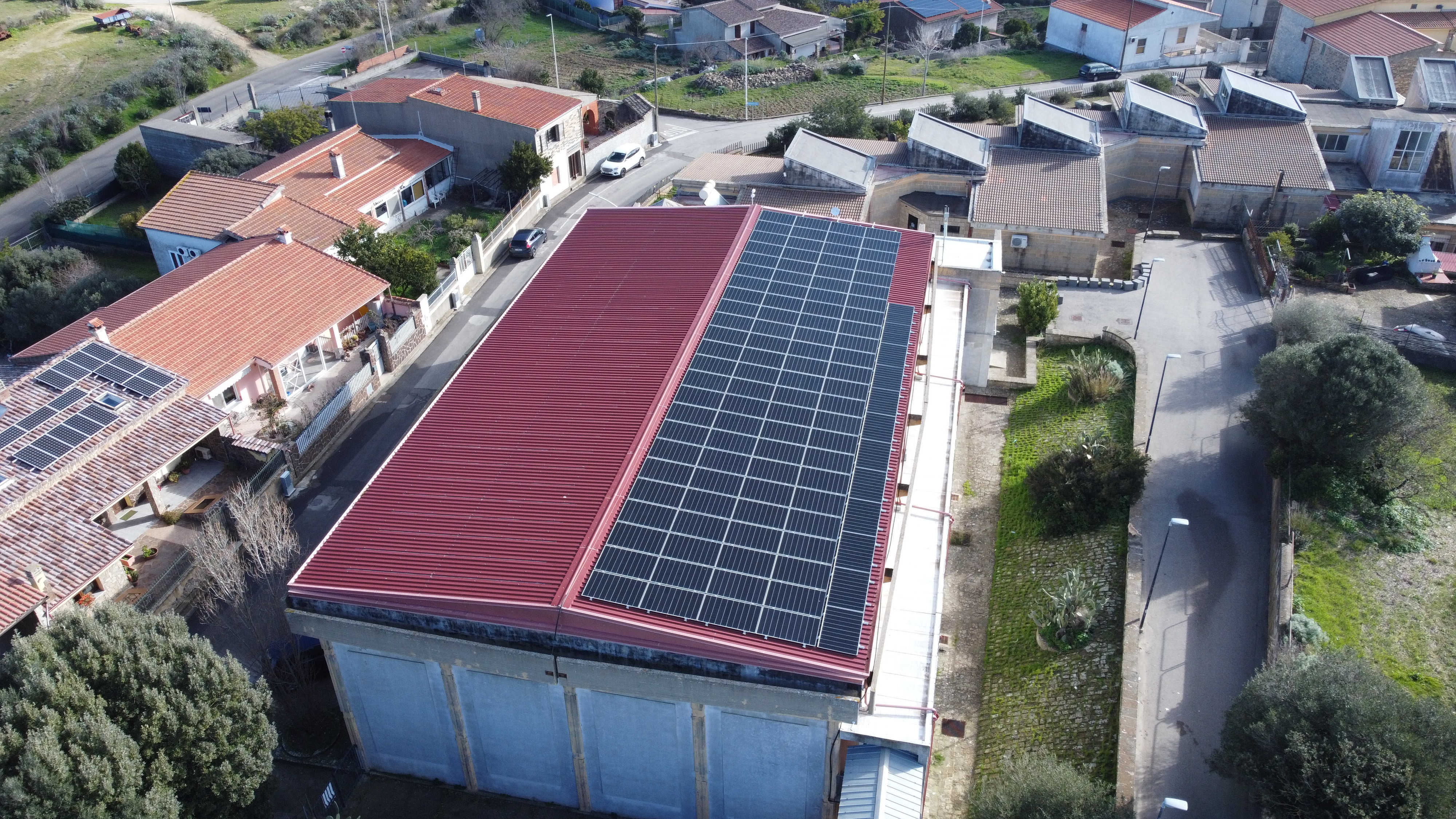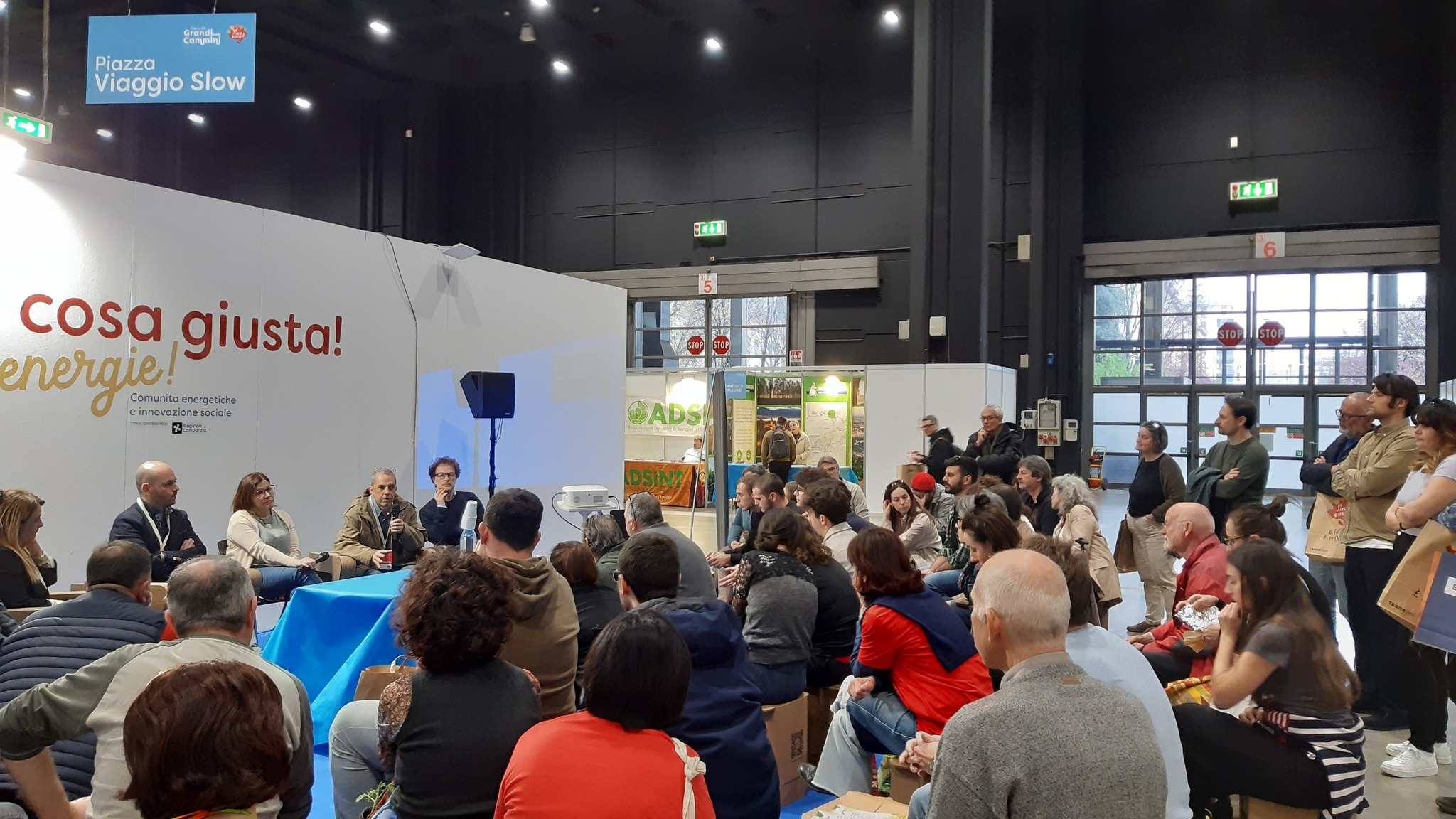Stories
April success story: Empowering Communities through Renewable Energy: the journey of Villanovaforru and Ussaramanna
Community energy is key to action on the climate crisis. It can empower people, boost local economies, and reinvigorate communities. Community-led initiatives play an important part in the transition towards a 100% renewable and just energy future. Success stories of community energy projects can be found all over Europe. At REScoop.eu we want to highlight these stories to further accelerate the movement towards a cleaner and democratic system.
This month we travel to Italy to learn about the creation of two energy communities in the island of Sardinia and the support provided by the energy cooperative ènostra.
The first energy communities of Sardinia
The island of Sardinia, located in Italy, known for its favorable wind conditions, produces more energy (11.6 TWh) than it consumes (8.5 TWh). However, large wind farms installed by big energy companies have often resulted in minimal benefits for local communities. In contrast, Villanovaforru and Ussaramanna, two municipalities in Sardinia, have created their own energy communities, where energy is produced and consumed locally, and decisions about installations are made by local residents.
The journey towards creating these energy communities began in late 2020, when the mayors of Villanovaforru and Ussaramanna approached ènostra for a feasibility study to determine the possibility of creating an energy community in their municipalities. The analysis identified suitable sites for building photovoltaic (PV) installations, mapped the local energy needs, and assessed the interest among local residents. The results were positive, and the work to create the energy community started.
Ènostra organised meetings with local residents to inform them about the project, collected declarations of interest for the formal registration of the community, and supported the local governments in various administrative processes. In July 2021, the energy communities were officially established, and by January 2022, both municipalities had installed the PV plants.

Currently, the PV installations are connected to the grid and provide energy to local buildings, with excess energy fed back to the grid and benefits shared among community members while awaiting final administrative permission to share energy among members.
The role of ènostra
As the largest energy cooperative in Italy with around 12,000 members, énostra has played a crucial role in the creation of these energy communities and is involved in the establishment of several others across Italy. With an annual production of around 3 GWh generated by the cooperative power plants and over 35 GWh of electricity supplied per year, ènostra has built valuable expertise that can benefit new energy communities.
The cooperative offers a comprehensive five-step framework for creating an energy community, including feasibility study and stakeholder mapping, community engagement and membership campaign, legal consultancy and establishment of the juridical entity, installation of renewables plants, and registration of the energy community for the acknowledgement of the premium tariff.

Currently, ènostra is involved in the creation of around 30 energy communities, including Villanovaforru and Ussaramanna, which are among the most advanced ones. In these municipalities, ènostra has been involved in most of the process, except for the installation of PV panels, as the cooperative preferred to support the local economy and engage local technicians for this task.
The impact in Villanovaforru and Ussaramanna
In Villanovaforru and Ussaramanna, community energy is seen as an added value for the territory. Marco Sideri, the mayor of Ussaramanna, highlights the benefits of community energy:
“The energy community brings citizens together around an innovative common project with economic, environmental and social impacts. It is an ingredient that gives new life to our town: it helps citizens bear the energy costs and provides a positive image of the municipality outsiders, making it more attractive.”
Despite being small towns facing depopulation challenges like many others in Italy, both Villanovaforru and Ussaramanna were able to finance the feasibility study and installation of solar panels with public funds, making community energy an attractive option for members who can benefit from energy production without investing in the installation. These initiatives have received strong support from neighbors, with favorable membership conditions being a pleasant surprise for some, as Marco explained to Euronews last year.
The community energy of Villanovaforru manages a 44 kW PV installation on the roof of the school’s gymnasium and is composed of 45 households and a hotel. On the other hand, the community energy of Ussaramanna is composed of 56 households and four small businesses, and manages two PV installations - on the city council and on the social centre buildings - with a total capacity of 71kW. Decisions in both energy communities are made in the General Assembly, where each member, including the municipality, has one vote.

Sara Gollessi, a board member of ènostra, explains that it is “common to see municipalities initially leading the creation of an energy community and then handing it over to citizens or becoming regular members.”
Obstacles to community energy
Despite the great interest, not all neighbours of Villanovaforru and Ussaramanna are members of the energy community. The current Italian law for energy communities, requires members of an energy community to be connected to the same low-voltage station of the PV plant, and unluckily there is more than one station both in Villanovaforru and in Ussaramanna.
Identifying members connected to the same low-voltage station has been a bureaucratic challenge, but upcoming changes in the law, including the upgrade of spatial limitation to medium-voltage stations and the mandatory publication of these stations’ pertinence areas, are expected to address this. Other obstacles include funding for installations and connecting plants to the network, with distributors sometimes imposing additional fulfilments that increase time and costs (e.g. realization of new power lines segments to avoid congestions) .
Bureaucracy and financing were also major obstacles in Villanovaforru and Ussaramanna, with Marco pointing out that “the bureaucratic process is a new ground for everyone, and it was a leap in the dark at first”.
Project(s) for the future
The mayors of both municipalities hope to expand the energy communities once the new law is approved, giving all neighbours the opportunity to join.
Thanks to smart meters installed through the EU-funded LIFE LOOP, an EU-funded project in which REScoop.eu, ènostra and other partners aim to connect local authorities and their citizens to work together around community energy projects, community members will optimize energy consumption and sharing by understanding their usage and adapting to real-time production.
Moreover, in the context of the LIFE LOOP project, Villanovaforru, Ussaramanna, and ènostra plan to conduct a feasibility study for new generation plants and storage systems. Additionally, the mayors hope to create a consortium of energy communities within the next two years to lower management costs and broaden the project's scope, given their proximity and shared vision for energy democracy.
